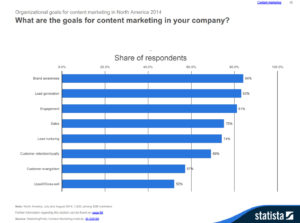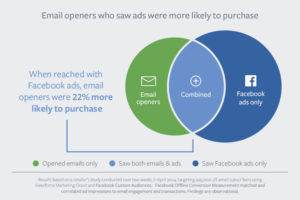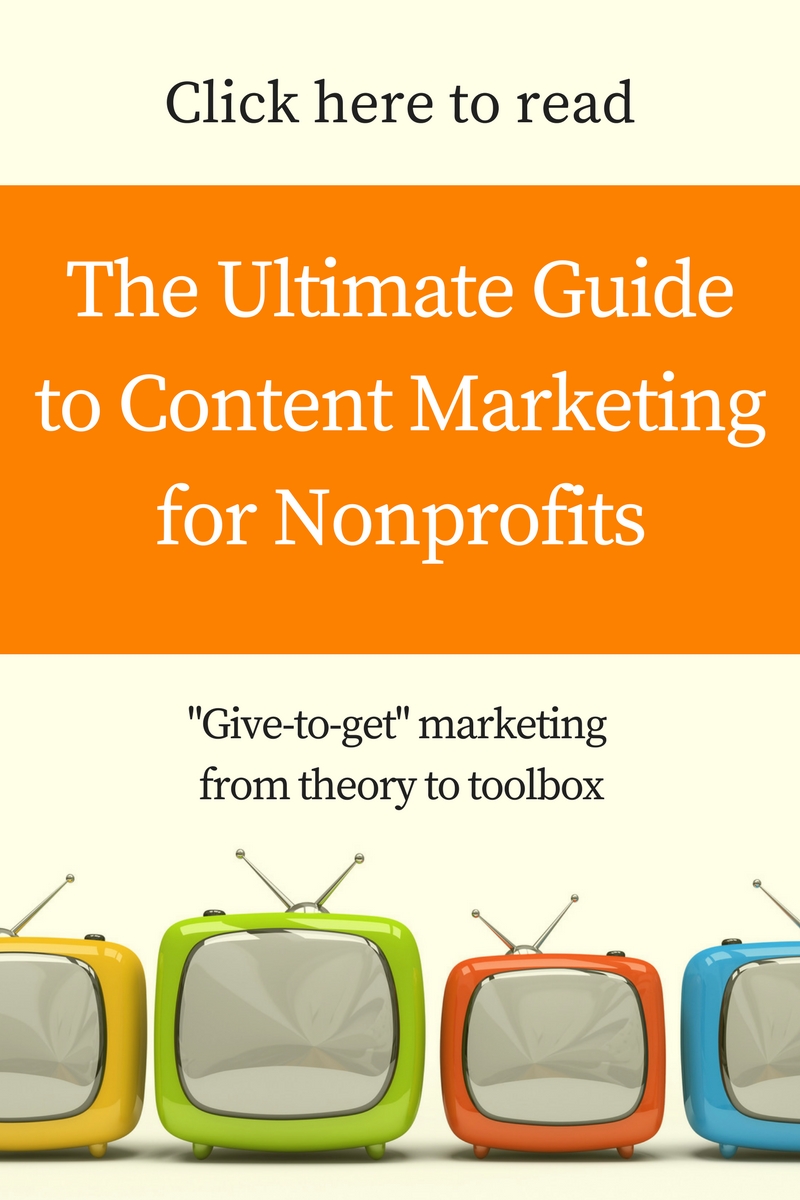It’s becoming harder to make your case. Your company may have a stellar product or service, but without effective B2B marketing strategies, your message will reach only a fraction of the intended audiences and will lack the impact needed to move the few that are engaged.
A CB Insight study involving more than 100 failed startups showed that the top reason startups don’t succeed is they don’t set out to serve an existing market need. But even for well-entrenched and highly capitalized global brands, the high casualty count of failed products serves as a costly reminder that B2B marketing strategy matters.
This guide presents the key concepts you need to create a marketing strategy that squarely addresses your unique B2B challenges. We try our best to keep it simple, handy, straightforward and actionable. You’ll see it evolving over time because we want to keep you in sync with emerging tools, approaches and best practices in B2B marketing.
B2B marketing strategies require more than just budget
As changes in technology and modes of engagement change the landscape, the crucial role of marketing becomes even more pronounced. The research firm Gartner expects marketing budgets to remain on the rise in proportion to revenue, while business intelligence software company Sisense ranks marketing second only to management as the top CEO skill.
In the B2B sector, simply hiking the budget for your marketing department won’t make the cut. Given the complex range of variables such as customer channels, engagement tools, content formats and analytics platforms to consider, success will ultimately depend on:
- how companies assess their unique challenges,
- how they design on-target B2B marketing strategies and
- how they utilize traditional and digital marketing tools to execute those strategies.
A marketing strategy encapsulates three key elements:
- your business objectives within a specific period,
- the series of actions and campaigns that will move the needle towards these objectives, and
- the resources, tactics and tools needed to attain your goals efficiently.
Your B2B marketing strategy should respond not only to challenges and opportunities unique to your company but also to those affecting the industry at large. This includes those that will likely arise due to disruptive technologies and new ways of doing business.
Before making your plan
A well-charted journey always involves clarifying your destination and getting your bearings. To get to your desired destination, you need to know your exact position on the map. For B2B marketers, this requires a series of objective self-assessments, including one that maps your team against other players in your space.
Consider these questions to help you clarify your company’s current position:
- Does the team have a clear and formal B2B marketing strategy in place? If so, does everyone know about the game plan and are they following through?
- Were the previous marketing objectives accomplished? Which metrics and key performance indicators (KPIs) are being used to determine success?
- Is the team’s previous performance on par with those from similarly scaled competitors?
- In terms of budget and focus, what is the share of digital marketing compared to non-digital in your company? Is that common in the industry?
- How robust and effective are the customer engagement tools at your disposal?
- Does your team have the baseline skill sets of an effective marketing unit? Is decent training readily available for upgrading existing skills and developing new ones?
Pause also to look at ROI. How do your efforts in different marketing channels perform? These might include:
- Conventional marketing
- Conferences, trade shows and other events
- Traditional advertising
- Direct marketing
- Digital marketing
- Website development
- Content marketing
- Online advertising
- Social media engagement
- Mobile engagement
Knowing where your team stands allows you to identify areas for improvement, which can then be integrated as objectives in your marketing strategy. But only addressing growth-impeding challenges (such as the lack of a specific tool) won’t be enough to complete an effective strategy. You also need to have proactive objectives focusing on opportunities that propel growth.
Not sure where to start with your goal-setting?
Here’s a sampling of key marketing goals and opportunities that you might need to include in your B2B marketing strategy:
- Improve lead generation, conversion rate, or process efficiency through resource acquisition (software tools, talent recruitment, skill outsourcing, training platforms, and other assets).
- Design and execute lead generation campaigns in specific customer channels.
- Ramp up content marketing and email campaigns to grow customer base and improve conversion rates.
- Encourage additional business through nurturing programs.
- Launch a recurring event marketing campaign for qualified leads.
- Build presence in a new social media channel to generate leads from a non-core demographic, or a less-served customer persona.
And here’s how companies in North America purposed their content marketing campaigns in 2014, according to Statista:
Steps to a winning B2B marketing strategy
Moving from one point (the current state of your assets and performance) to another (your improvement wish list or growth objectives) may seem fairly simple — and it is. However, the path won’t always be a straight line. Marketing strategies include multiple objectives, overlapping campaigns and different tactics for meeting targets faster, easier and with more impact.
Here’s a commonly adopted process describing the steps in designing effective B2B marketing strategies:
- Identify your core audience. Create buyer personas based on the real-world market. Describe customer journeys across different engagement scenarios or stages in your marketing funnel. Leverage these stages through efforts such as lead qualification and nurturing programs.
- Assess your strengths and weaknesses and evaluate how you fare against competition. Identify growth opportunities arising from an internal challenge (you have a grossly outdated CRM software), a particularly strong asset (e.g., you have excellent content creators) or external opportunity (your rival closes shop, leaving its customer base up for grabs).
- Set your objectives. Add a layer of immediacy, viability and accountability to your objectives by using the SMART framework to set your goals.
- Identify the channels, tools, assets, tactics and resources required to achieve your objectives.
- Describe how you will deploy campaigns, use tools and maximize customer channels.
- Establish the metrics, KPIs, and feedback systems that will determine whether you have achieved your goal on schedule and within budget.
- Execute, measure and iterate.
Which B2B marketing channels to tune in
Obviously, you need to focus on media platforms your buyer personas regularly visit or use. But that doesn’t mean you should neglect less frequented B2B marketing channels where there’s a likelihood that your brand will get noticed by decision makers or by users who belong to your non-core demographic. Smart Insights has also shown that highly-integrated multi-channel campaigns can increase conversion rates, citing the case of a successful Facebook ads-email marketing mashup:
While digital has become the dominant platform for customer engagement, many B2B marketers still consider print media an important arena for reaching their audience. Statista found that 37% of respondents still executed print-based campaigns in 2014. Meanwhile Kissmetrics makes the case for the often denigrated and deemed outdated outbound channels, arguing that the sum of your cross-channel efforts is greater than any individual approach.
Here’s a quick review of channels B2B marketers commonly use:
- Inbound channels. Inbound marketing engages a specific audience in a way that induces the audience to initiate conversation with a brand. Inbound channels and tools include search engine optimization (SEO), pay-per-click targeted advertising, subscriber-based email marketing, social media marketing, blogs, podcasts, webinars and content marketing.
- Outbound channels. Outbound marketing encompasses traditional marketing approaches wherein the brand initiates the engagement with its audience. Examples include broadcast (television and radio) advertising, print (newspaper, magazine, brochures), events such as trade shows and conferences, cold calls and email blasts.

The top platforms B2B marketers used in 2014, Statista
The shiny stuff in your B2B marketing strategy toolbox
Gone are the days when marketers simply hired an ad agency to create television commercials and just let luck decide whether the commercial reaches their core audience. Most of today’s B2B marketers create the content themselves and meticulously design the channel-specific campaigns through which these content are unleashed. This has become possible through sophisticated digital marketing tools that are highly targeted, data-driven and capable of building immersive customer experiences.
Through powerful tools, marketing has already taken the quantum leap from the point where you force the audience to digest your message to one where highly engaged customers become ardent brand endorsers themselves.
The challenge for B2B marketing strategies isn’t the lack of adequate tools but whether it can select and optimize the ones that match products with customers. A single B2B marketing campaign often depends on several tools running on multiple platforms. At the very least, your tools should be able to deliver all the outputs your strategy specifies.
Here are some powerful marketing resources you might want to keep in your toolbox:
- Content Management. A good content management system (CMS) helps you create, modify, store and manage digital content such as blogs, articles, videos, images, e-learning modules and even your organization’s entire knowledge base. Because your website will be hosted by your CMS as well, choosing the right one is critical to your sustainability and growth. Equipped with analytical tools and SEO-enhancing features, capable CMS such as WordPress, HubSpot, Marketo and Pardot are great to have on your side. (Next up, AI driven CMS like this new one from IBM’s Watson.)
- Content Authoring. Part of your task as a B2B marketer is to engage your core buyers with compelling content that squarely addresses their needs. To create content such as infographics, presentations, articles, animation and videos, you need tools like Google Docs, Canva, Office Online and Adobe Creative Cloud.
- Web Monitoring and Analytics. Digital marketing doesn’t end with building a website and publishing content on social media. You still need to measure your message’s impact on your target audience and determine how you can translate engagements into qualified leads. To do that, you need web tracking and analytics services such as Google Analytics, Kissmetrics and Woopra.
- Email Marketing. Email marketing ranks among the most useful and results-generating activities among B2B marketers. You can use it to build loyalty, establish brand awareness, promote products and services and gain new potential customers. Email marketing tools provide automation, monitoring, analytics and customization. Some of the more popular platforms include MailChimp and AWeber.
- Social Media Management. Social media tools generally help you automate social media tasks such as post scheduling, follower and influencer engagement, channel listening and reporting. Automating your social media activities helps you save time for other elements of your strategy such as content production and event management. Some of the bestknown social media tools include Hootsuite and Buffer. (Some of our clients swear by MeetEdgar, and we’ve been experimenting with CliClap lately for scheduling and with Quuu.co for paid social media promotion.)
- Influencer Amplification and Content Discovery. Marketing is about targeted communication. Conversion often occurs when your message perfectly matches your audience. For this to happen, you need to know what your targeted customers are looking for. Services like Buzzsumo and Google Adwords help you decide which specific topic to cover and the best channels to engage your audience in.
- Marketing Process Automation. Thanks to technology, many of the different elements and processes that comprise marketing can now be automated. If you want a streamlined unit where automation frees up the B2B marketing team to perform more value-generating activities, then you need sophisticated marketing platforms such as Hubspot, Marketo and Oracle Eloqua.

Screenshot of the Hubspot marketing dashboard
Money matters – Your B2B marketing budget
Budget might arguably be the biggest issue in the design of B2B marketing strategies. Because strategy consists of campaigns whose different elements always have a price tag, persuading management to grant you the marketing budget you need can be a major hurdle.
But because marketing helps bring in profits, articulating the rationale for a decent budget only requires clear evidence that the ROI you’ve achieved in the prior period may be replicated or exceeded by the new strategy.
Gartner found that marketing budgets continue to rise as a proportion of corporate revenue across industries. Research Vice President Jake Sorofman said, “Marketing is now responsible for critical customer-facing, revenue-generating systems and applications.” He added that because the mandate of marketing departments has significantly broadened, a CMO’s technology spend is approaching parity with that of a CIO.
Developing your team through hiring or outsourcing
Tools are important, but so are the hands that use them. The talent available to your B2B marketing strategy influences how you will reach your objective. That means building, training and deploying the people who make up the team is critical to your success.
Unless your team possesses all the specialist skills (SEO, content marketing, event management, social media engagement, etc) needed to lift your brand, you’ll likely be trumped by competition down the line. Depending on your budget and long-term strategic direction, you can fill skill gaps through hiring or outsourcing. (Naturally, we have a strong point of view about those skills here — that strong editorial processes are a critical part of success for B2B marketing strategies.)
Position your company to keep moving forward
Sound B2B marketing strategies scan the landscape for emerging trends that can alter relationships, disrupt product trajectories, realign competitive positions and trigger new conversations.
Managed the right way, any change can open up valuable opportunities that a brand can leverage for growth. Ignored, on the other hand, an impending change can easily flip your business on its head. Recall that even before the advent of online data streaming, video rental shops should have already seen red flags when new digital media formats such as MP4 kept entering the market.
The key is not always to be the first player to adopt a new technology, enter a new niche or dump an outdated product or service — but you don’t want to be the last either. Having enough intel to make smart decisions at the right time keeps most B2B companies afloat.
Some technological advances have forever altered the practice of marketing. Mobile marketing was virtually nonexistent before the 21st century while social media as a marketing channel only exploded a few years ago. Expect other innovations to disrupt the market anytime soon. With the Internet of Things, artificial intelligence, virtual reality, quantum computing and other nascent technologies on the rise, being ready for disruptive change is a strategic imperative. Set provisions in your strategy that will allow you to pivot once a new technology or way of doing things takes hold.







